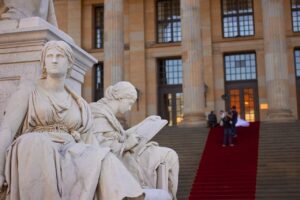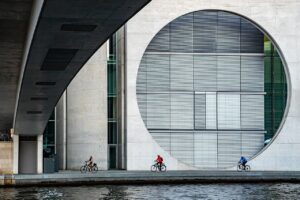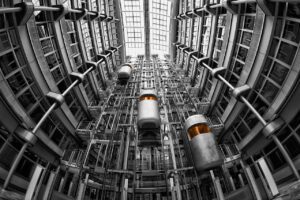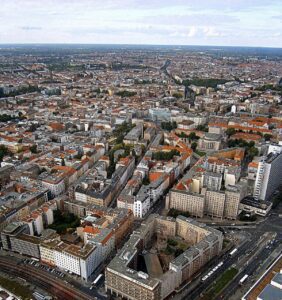Berlin
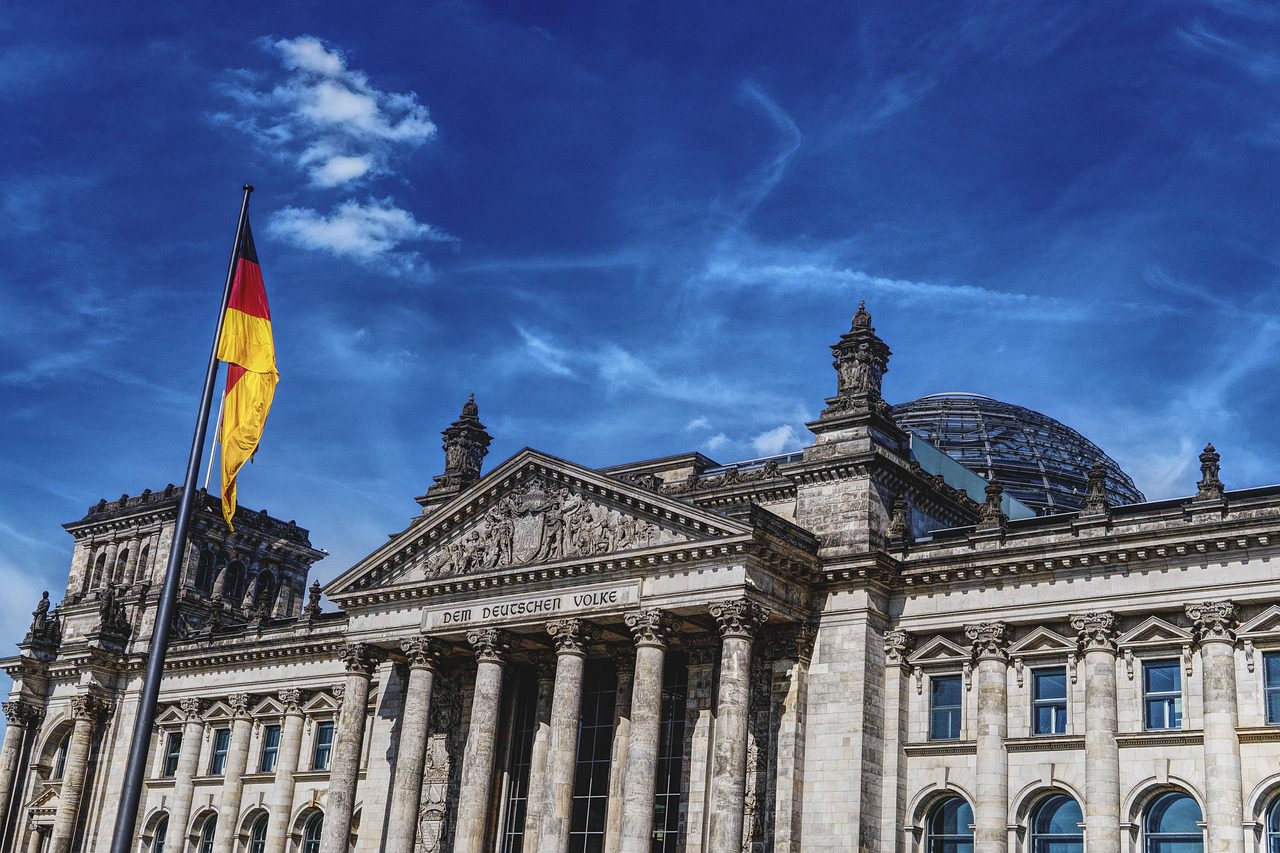
Berlin Modernism Housing Estates: A Legacy of Modern Architecture
Berlin, the capital of Germany, is famous for its glorious past, modern art, and innovation in buildings. Of all the wealth, Berlin Modernism Housing Estates stand out as one of the greatest achievements in urban planning and social revolution. These estates were a breakthrough in the design of modern homes as buildings and are a UNESCO World Heritage Site from 2008. They were built during 1910-1933 to offer answers to housing deficits and raise living conditions of working-class households. This grand scheme transformed the public perception of urban life and architecture. It integrated functionality, comfort, and community ethos — ideas that shaped cities of the future around the world.
Historical Background
Berlin was growing rapidly at the beginning of the 20th century. The majority of the laborers lived in tiny rooms that did not have enough flow of air or sunlight. It was an unhealthy and unsustainable environment. In order to come up with a solution to this problem, Berlin’s architects, planners, and the government sat down together. They wanted to create homes that were cheap, clean, and beautiful. It was the time when modernism in architecture began to make its presence felt in Europe. Modernism promoted simplicity, lightness, and functionality. Bruno Taut, Walter Gropius, Martin Wagner, and Hans Scharoun were the pioneers of this new movement. They initiated revolutionary designs, open plans, and new materials. Between 1913 and 1934, a number of housing estates were built around Berlin that offered a new urban style of life. The estates were an icon of hope for a better society — where everyone could live in dignity and comfort.
Key Berlin Modernism Housing Estates
Otherwise known as the “Paintbox Estate”, Falkenberg Garden City was constructed by Bruno Taut and Heinrich Tessenow between 1913-1916. It is located in Treptow-Köpenick, a quiet suburb of Berlin. The estate is famous for its colorful houses, which create a happy and artistic image. Each house has a small garden, where individuals can grow flowers or vegetables. The community layout promotes social interaction and outdoor life. The estate is a testimonial to the Garden City movement, which combined nature’s beauty with the convenience of the city. The vivid colours and simple geometric motifs transformed Falkenberg into a symbol of artistic freedom and social progress.
Siedlung Schillerpark (Schillerpark Estate)
Built between 1924 and 1930, the estate is located in Berlin’s Wedding district. Bruno Taut, a leading modernist architect, designed it. Schillerpark Estate was a shift towards functional modernism from ornamental styles. The buildings are simple, with flat roofs, open courtyards, and huge windows for ventilation and lighting. The plans encourage a community feeling, with shared green spaces for kids and families. The estate also had modern amenities like bathrooms and central heating — luxury at that time!
Hufeisensiedlung (Horseshoe Estate)
Perhaps the best known of them all, the Hufeisensiedlung was developed from 1925 to 1933 in the Neukölln district. It was designed by Bruno Taut and Martin Wagner. The name “Hufeisen” itself is horseshoe-shaped, referring to the large, curved structure in the middle that surrounds a pond. There are around 1,285 apartments within the complex, each of which was designed to be exposed to sunlight, air, and vegetation views. Color also took a significant role here again. Taut used red, blue, and yellow colors to give personality to the buildings.
Wohnstadt Carl Legien (Carl Legien Housing Estate)
The estate, built between 1928-1930, is located in Prenzlauer Berg, a vibrant neighborhood of Berlin. It was designed by Bruno Taut and Franz Hillinger, with open courtyards and apartment complexes with ample sunlight. The houses are lined in rows, introducing order and harmony. It is practical in style yet retains the beauty.
Weiße Stadt (White City)
The Weiße Stadt, or White City, was constructed in Reinickendorf between 1929 and 1931. The name of the estate was derived from white building facades. The buildings were planned by architects Otto Rudolf Salvisberg, Bruno Ahrends, and Wilhelm Büning with simplicity and homogeneity in mind. Sanity, modernity, and hygiene were expressed through the white tone of the buildings — crucial factors of modernist ideals.
Siemensstadt Housing Estate
Built between 1929 and 1931, Siemensstadt is located near Charlottenburg-Nord. The estate boasted a number of architects, including Walter Gropius, Hans Scharoun, Hugo Häring, and Fred Forbát — all prominent figures of the modernist era. The building was meant for workers in the Siemens Company, a vast German industrial firm.
Architectural Features and Principles
The Berlin Modernism Housing Estates have some architectural principles that made them stand out:
Use of Light and Air:
Every apartment was designed with large windows and open courtyards so the sunlight and fresh air could pass through.
Green Spaces:
Playgrounds, gardens, and trees were an absolute necessity in every design. They provided health and social contact.
Color and Form:
Bruno Taut especially loved to use colors to express cheerfulness and individuality. The buildings have simple forms but colorful facades.
Functional Layouts:
Every room was carefully designed to save space and be cozy.
Social Equality:
The motive was not opulence for a few but convenience for all. These homes made modern living affordable to working-class families.
Special Architectural Buildings
Reichstag Building (German Parliament)
The Reichstag is a highly recognized structure in Berlin. It was built in the late 19th century. It was damaged in wars and also in a fire afterwards. Then it was rebuilt. It now houses the Bundestag (German parliament). One of the interesting features is the glass dome. It was completed in 1999 by the British architect Norman Foster. The dome consists of glass and steel. It lets sunlight through to the debating chamber below. Further, one can ascend up a spiral ramp inside the dome. This provides a 360-degree panorama of the city. The glass dome also represents democratic transparency. You can visit the dome free of cost. But you need to reserve well in advance. Neighboring Tiergarten and Brandenburg Gate.
Brandenburg Gate
Brandenburg Gate is not a skyscraper modern structure. But it is Germany’s most important monument. It was built in the 18th century in neoclassical architecture. There are six columns and a chariot statue on top of the gate. It was in proximity to the Berlin Wall for years. Therefore, it was a symbol of separation. When the wall collapsed in 1989, the gate came to symbolize unity. Now many individuals gather here. Nearby lies Europe’s largest inner city plaza, Pariser Platz, and numerous embassies.
Berlin Cathedral (Berliner Dom)
The Berliner Dom is the capital’s large cathedral. It was rebuilt in baroque style around 1905. The large green dome is visible from most places. Inside, the cathedral has rich decoration. It contains the Hohenzollern dynasty’s crypt as well. Panoramic views over Museum Island and along the Spree River are appreciated from the dome’s balcony by tourists. Close are the Altes Museum and Bode Museum.
Berlin Philharmonie
Berliner Philharmonie is an excellent concert hall in the world. It was constructed by Hans Scharoun and opened in 1963. The building goes against many conventions. The stage is located centrally. The audience surrounds the performers. The seating is terraced like a vineyard. This offers close-up views and great sound.
Jewish Museum Berlin (Daniel Libeskind)
The Jewish Museum is expressive and emotive. Daniel Libeskind designed it and it opened in 2001. The building has a jagged lightning bolt appearance. It has a zinc and concrete construction. The corridors slant and curve on the inside. There are sudden turns and empty voids. These spaces represent loss and vacancy. The museum tells Jewish history in Germany.
Bauhaus Archive / Museum of Design
This characteristic school is honored by the Bauhaus Archive in Berlin. The school’s founder, Walter Gropius, built the structure in Berlin. It embodies simple, functional design. Rooms are tidy and cheerful. There are furniture, sketches, and design tools exhibited in the museum. The Bauhaus idea revolutionized worldwide modern design. Surrounding the museum are design shops and the green Kreuzberg neighborhood.
Berlin Hauptbahnhof (Central Station)
Berlin Hauptbahnhof is a modern transport symbol. It was opened in 2006 and designed by the practice gmp (Gerkan, Marg & Partners). Most of the station is made of glass and steel. Trains run on more than one level. The massive glass roof lets in an abundance of light for the concourse. Cafes and stores dominate the station halls.
Fernsehturm (TV Tower)
Fernsehturm is a symbol of Berlin’s skyline. It was built in the late 1960s by East German construction workers and was a display of the most up-to-date technology. The tower is over 368 meters high. Inside the top is a revolving restaurant and viewing deck. On a bright sunny day, you can see for miles and miles.
Sony Center at Potsdamer Platz
The Sony Center is Helmut Jahn’s new city complex. It was opened around the year 2000. The top is a glowing flower during nighttime. Cinemas, shops, and offices are contained within. It stands on Potsdamer Platz, which was reconstructed after reunification. Surrounding it are skyscraper offices and museums.
Neue Nationalgalerie (Mies van der Rohe)
New Nationalgalerie is a work of art in modern architecture. Ludwig Mies van der Rohe constructed it, and it opened in 1968. The museum is famous for glass walls and a steel ceiling. The ceiling is a massive plane suspended over the building. The interior has an open structure with a transparent area. The gallery contains important 20th-century artworks.
Kaiser Wilhelm Memorial Church
The Kaiser Wilhelm Memorial Church is a war memorial. Built in the 1890s, it was destroyed during World War II. The ruined tower stood as a reminder. Next to it, a new church building was built in the 1960s. The contrast is impressive.
East Side Gallery (Berlin Wall Art)
East Side Gallery is a long section of the old Berlin Wall. Artists painted the wall in 1990 after the fall. Today there is an outdoor gallery. The paintings speak of hope, change, and history. The wall is located next to the Spree River in Friedrichshain.
Visiting Tips
First, book ahead. Numerous places require tickets or timed admission. Second, bring comfortable shoes. Berlin welcomes walking. Third, take public transit. The U-bahn and S-bahn are quick and hygienic. Fourth, balance old and new. View landmarks and contemporary structures within a day. Berlin is full of architectural surprises. Old fashions are combined with bold new ideas. Every building has a story. Collectively they exhibit a city that is constantly changing. If you want to see design, Berlin is a great place to go. You will witness the beauty of history and of new shapes. You will observe how architecture can draw from the past and look forward to the future.
Cultural and Social Importance
The Berlin Modernism Housing Estates were more than buildings. They were a new vision of society. They aimed to create equality of standard of living, healthy lifestyle, and social ties. The estates also changed city planning worldwide. Cities in Europe, Asia, and America adopted similar designs to improve worker housing.
Preservation and UNESCO Recognition
UNESCO, in 2008, recognized the six estates as a World Heritage Site. This was because they provided a remarkable contribution towards modern architecture and social housing. Berlin has cradled these districts with love. They have been preserved to maintain their originality while adapting them to modern needs. Individuals today are able to walk along these districts and see how life in the city began in the early 20th century.
Tourism and Visitor Experience
Walking through Berlin Modernism Housing Estates is tantamount to walking through an open-air museum of modern architecture. Each of these estates has a history of optimism and innovation. There are guided tours, strolling through exhibits, or strolling across the green courtyards. The Hufeisensiedlung and Schillerpark Estate are especially popular with their brightly painted homes and well-maintained parks.
Surrounding Places and Attractions
Berlin is rich in history, and most of its sights are around these residential estates. Let us discover some of these places around worth seeing:
Charlottenburg Palace
Close to Siemensstadt is the impressive Charlottenburg Palace, the largest palace in Berlin. Completed in the late 17th century, it is a portrayal of Baroque and Rococo styles. The surrounding gardens and lake make it a serene oasis.
Brandenburg Gate
Just a short drive from Schillerpark Estate, the Brandenburg Gate is Berlin’s most iconic landmark. It symbolizes harmony and peace following the fall of the Berlin Wall.
Berlin Wall Memorial
Close to Carl Legien Estate, the memorial features original wall parts and stories of individuals who grew up behind divided walls.
Museum Island
Close to Prenzlauer Berg, Museum Island houses five world-famous museums. It’s perfect for art lovers and history students.
Tempelhofer Feld
Formerly an airport, now a huge city park close to Neukölln, it’s close to Hufeisensiedlung. Tourists and locals cycle, kite, and have picnics here.
Tiergarten Park
The city center park of Berlin, close to the government district, features greens and beautiful strolls.
Modern Influence and Global Inspiration
The ideas of Berlin’s new residential schemes trickled down all over the world. Architects across countries like Sweden, Japan, and America drew inspiration from these models to improve social housing. The idea of chic but affordable homes continues to be an inspiration for urban planners even today. In fact, most of Berlin’s new residential schemes stick to the same principles — greens, openness, and functionality.
Conclusion
The Berlin Modernism Housing Estates are a living legacy, not just an architectural history. They show how design can transform society and improve lives. Every one of the estates, from the blaze of color in Falkenberg to the snowy minimalism of Weiße Stadt, is an expression of a belief in fairness, comfort, and progress. When you visit Berlin and walk through these neighborhoods, you don’t just observe buildings — you feel the spirit of creativity and humankind that built them. These estates continue to be shining examples of how considered architecture can improve the world for everyone.
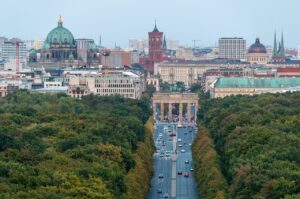
Author
Related posts
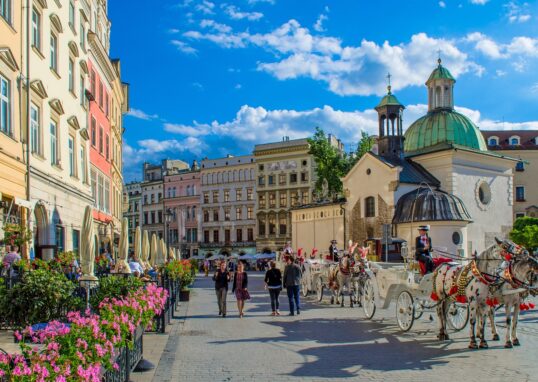
Kraków, Poland
Kraków – Beautiful and historic cities in Europe Situated in southern Poland, Kraków is one of the most beautiful and historic cities...
Read out all
Hierapolis & Pamukkale, Turkey
Hierapolis–Pamukkale – Stunning natural beauty and fascinating ancient history Hierapolis & Pamukkale are one of the most spectacular destinations in Turkey, where...
Read out all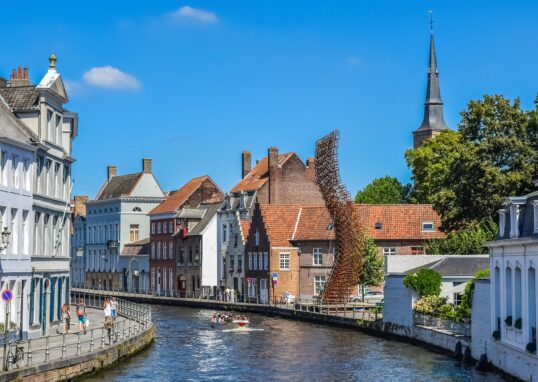
Brugge, Belgium
The Centre of Brugge – The northern part of Belgium The Centre of Brugge, sometimes referred to as the “Historic Centre of...
Read out all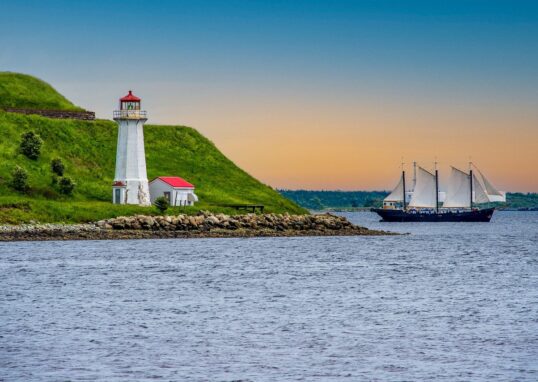
Nova Scotia, Canada
Nova Scotia, Peaceful provinces in Canada Situated on the far eastern side of the country, Nova Scotia is one of the most...
Read out all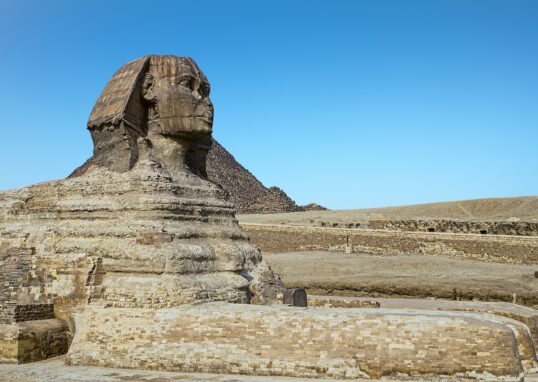
Historic Cairo
Cairo – Fascinating heritage areas in the World Historic Cairo, also known as Islamic Cairo or Old Cairo, is one of the...
Read out all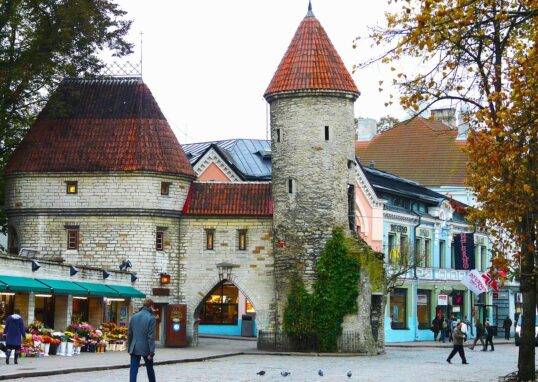
Tallinn, Estonia
Tallinn – A beautiful medieval cities in Europe Tallinn, Estonia’s charming capital, is one of the most beautiful medieval cities in Europe,...
Read out all

